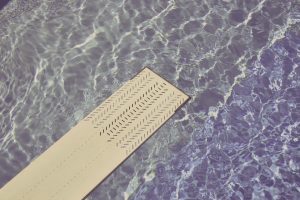TL;DR:
- The Grid Method can completely change your teaching practice, even your life.
- Ways the Grid Method can absolutely work for your primary students.
Just another PD session? Not exactly.
Everyone knows how end of the year professional development goes. You sit in meetings all day long, thinking about how much you have to do before packing up for the summer. I was so close to summer after my 5th year of teaching that I could smell the sunscreen while sitting in the high school auditorium for our whole staff guest speaker. On our agenda, the words Mastery Learning with The Grid Method were in bold print. An hour and a half session of something I was sure was going to be above the head of my primary students? Great.
Two years later, I can honestly say that sitting in that auditorium for an hour and a half has changed my life.
Wow. Big statement there.
Let’s break it down a bit more. That first presentation, a two day in-person training, classroom visits, and trial and error over the past two years have changed my life. Never in a million years did I believe that I would be able to reach seven and eight year olds with this type of instruction and learning.
Students rise to the challenges you give them. My students have shown great success with The Grid Method. Success doesn’t come without failure, and there is a fair share of mistakes that have gone into teaching mastery learning to second grade students. I have learned a lot along the way.
Students rise to the challenges you give them. Share on XOne thing that I know with absolute certainty: using The Grid Method in the primary grades is not only possible, but it is a successful tool to reach that wide range of learners sitting in front of you.
Jump In with Both Feet
The first piece that I share with other primary educators about teaching with the grid is that you have to take a leap. It may seem like a leap into the unknown, and when you jump, it may seem like you are falling. Fast.
Trying something new is always scary. When the new idea completely turns your way of teaching upside down, voices in your head haunt you. What if it doesn’t work? How are seven and eight year olds going to do this? This seems like so much work!
All of these thoughts went through my head. Panic ensued multiple times in preparation of my first grid, and for every moment during the running of that grid. What did I find when that grid was complete? ALL of my students grew, from pre to post assessment, by AT LEAST 30 percent, some as much as 60. WHAT?! I couldn’t believe it!
This is what happens when you take a leap of faith. Eventually, you won’t be falling. You will fly.

Implement Everything
One of the first things that you learn when exploring The Grid Method is that it will not work to its potential if you do not implement all parts of the grid.
What does that look like? In my classroom, that meant a grid box with all materials students would need, using the cup system and sticking to it, goal setting every day, and expecting mastery from students before being allowed to move on.
Students would track their progress on a projected board while I moved about the room, conferencing with students as needed. At first, anyone who entered my room would probably think that I had lost complete control of my classroom.
When you have multiple new moving parts, it can feel overwhelming. My promise to you is that ALL of the moving parts are necessary! Each part needs to be taught explicitly, especially to little ones. After they are taught, they will need reinforced constantly. Consistently. Every day.
My solution? I use the expectations all day long. Cups? All day. Goal setting? All day. Student independence? All day. Each day, it will get easier, and before you know it, you won’t remember how you were able to manage your class any other way.
Embrace the Chaos
As mentioned before, anyone who entered my classroom would probably think that I had lost complete control. At first, I would have agreed. Student use of The Grid Method leads to a lot of things that are not part of what would be considered a “traditional classroom” setting.

During that first grid, my students were loud, all over the place, and constantly on the move. I thought I was going to scream. But when I took a step back and a deep breath, I noticed something I hadn’t seen before in my teaching career. Students were loud, but they were discussing their learning with their peers. Kids weren’t sitting in their chairs, but they were choosing seats where they would be able to focus and collaborate with others. My second graders were constantly moving, but not one of them had asked me where to get something that they needed.
Chaos equaled independence among my students. I had to remind myself time and time again that they were only 7 and 8 years old, and they were independent in their learning. I was almost skeptical of it all. After some time, I got used to the crazy, and then realized that I had not lost control. Instead, it was like manning a well-oiled machine of independent children, and most days, they did it with very little help from me.
Plan with Multiple Modalities
Teachers are rockstars when it comes to planning! An essential part of using the grid is planning for all different types of learners. In a recent conversation with others interested in using The Grid Method in their buildings, I made the comment that you have to use a little bit of everything to engage all learners. If every box of every level is structured the same way, students of ANY age will have trouble remaining invested in the system.
Alternate learning styles from box to box. Use videos, book work, online quizzes, creative projects, organizers, music, games, and video responses, just to name a few! Students will jump at the chance to use these different activities because they seem fun and interesting.
Include Technology
Our school is lucky enough to have 1 to 1 technology for our students. This means that all students have access to technology at the same time, which is glorious. Not all schools have that luxury, but that doesn’t mean that you cannot incorporate technology into your grids.

Using tech tools is something that I am relatively new to, having been inspired at The Teach Better Conference in November. Weeding through technology can be overwhelming. You have so many options, and without trying them, you will never know what will most benefit your students.
If your school is like mine, you can incorporate multiple chances for technology in each level of the grid. My current grids include learning videos, online quick checks, video responses, online activities, digital task cards, and much more. Our children are being raised in a tech heavy world, so using a computer/tablet is natural to most of them from day one. I assign everything through Google Classroom, and students become familiar with accessing what they need when they need it.
What do you do if you have limited technology? If you have four devices for your entire classroom, you can still use technology in your grid. Being strategic with how you plan out your grid will make this possible. Most students will start on level one, so you may wait until levels two and above to involve any tech learning. It would be smart to have just one box later in level two, and maybe only two in level three, in which you incorporate online activities. Less students will be on any single activity by that point, and it will become manageable.
[scroll down to keep reading]
The Grid Method Mastery Learning has completely changed my life. I am so passionate about using it in my classroom, and I fully believe that it can be used for any subject at any grade level in any type of school setting. If you’re afraid to try this type of learning, let me reassure you that it is worth the jump!
ABOUT AMANDA POST
Amanda is a coffee obsessed second grade teacher from southeast Ohio. She enjoys teaching littles and thinking creatively to help her students learn. Amanda thrives on collaboration with peers in order to someday achieve her goal- change the world, one student at a time! Amanda couldn’t do what she does without the support of her amazing family and her dog Lily.


